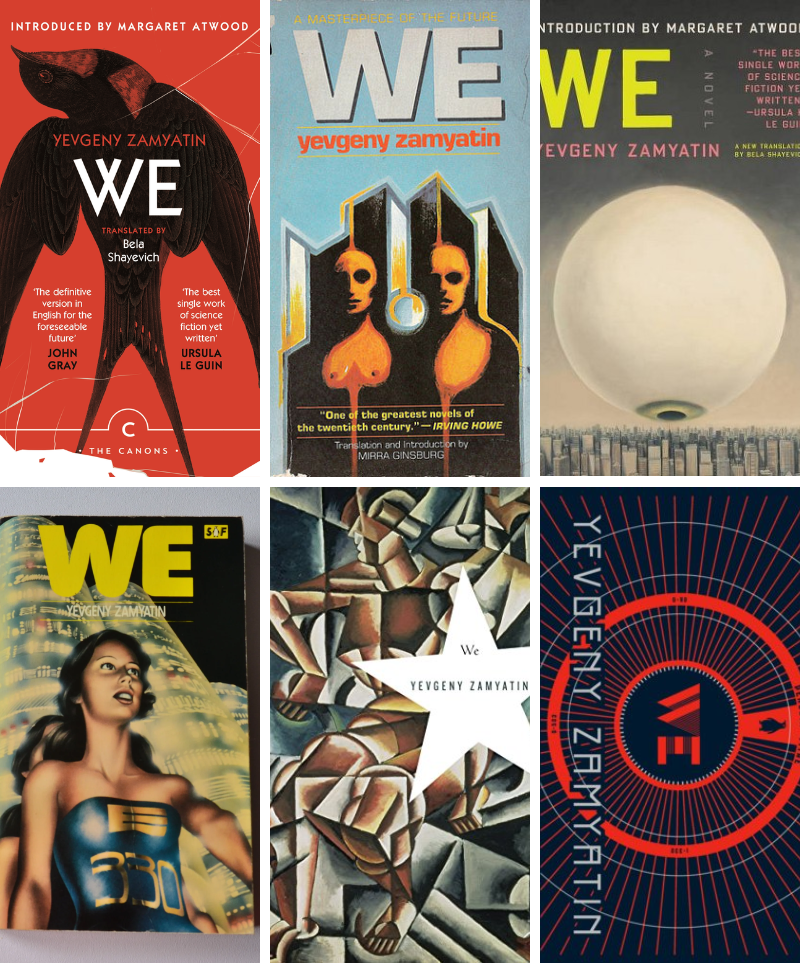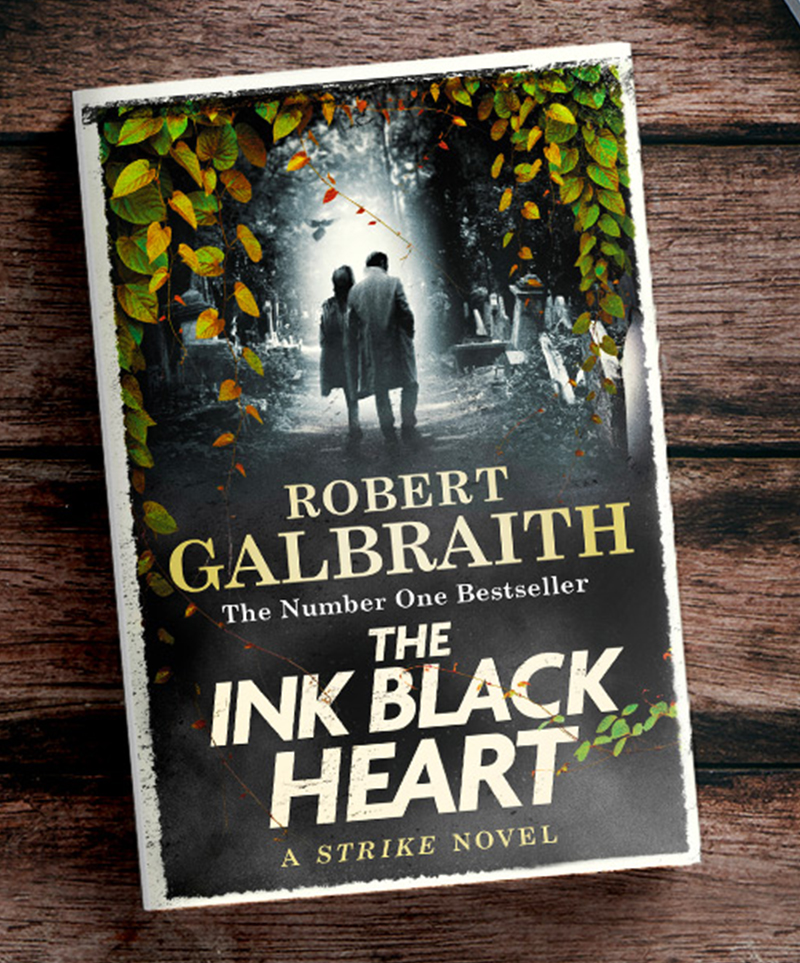We by Yevgeny Zamyatin

Do you reread novels?
I do, though not many and definitely not almost straight away after I have put the book down. But that’s what happened with me and Yevgeny Zamyatin’s novel “We”.
The book wasn’t included in our Russian literature curriculum for some reason, and though I’ve been meaning to get down to it for a long time, there was always something else to read – something fresh, something for the review, something as research or inspiration for my own writing. But then I had a wonderful motivation to finally pull the novel off my shelves. Luna Press Publishing announced a call for “Utopia of Us” anthology, dedicated to the centenary of the first publication of the story. I couldn’t pass this, so I dived into the novel to catch the vibes and find details and themes that would spark my creativity.
After the first read, I ended up having so many – the book was like a buzz of myriads of bees in my head: an element of the world, a metaphor, a twist in the fate of a character, something historical, something futuristic, and, of course, the language. In a way, it was too big to be comprehended straight away in all its entirety – not the plot, that one develops clearly and straightforwardly, but all the nuances that make the story bigger than the sum of events. And so I went for the second round, pulling out metaphor after metaphor out of the text, wrapping them around my brain to immerse myself deeper, to see with the eyes of the protagonist.
What the story is about…
“We” draws a utopian society, in which the United State (don’t confuse with the USA) builds Integral to be sent into space in search of other civilisations. The builder of Integral, D-503 starts to write his records, titled “We”, to be sent on Integral to enlighten other civilisations of the wonderful and correct ways of the United State. But as his diary progresses, we see his views being challenged and his life changing. On one of the days, he meets I-330 – a woman who irritates him with her ways. “In her eyes nevertheless, in her brows, there was a strange irritating X, and I was unable to grasp it, to find an arithmetical expression for it,” writes D-503. Yet, despite this initial dislike, I-330 pulls him into her orbit – she manages to arrange his schedule in such a way that he ends up in the auditorium she wanted him to; she invites him to visit the Old House – the relic of the old days, when the society wasn’t structured, houses weren’t made out of glass and life led according to the Taylor and McLauren formulae, which regulates the life of the whole society. I-330 signs up for him – she puts her name in the register in order to have sex with D-503 on certain days using the pink tickets. But instead of spending time with him, she asks him to draw down the curtains and just sit there alone. This results in D-503 having dreams – a dangerous sign of illness in the United State – and eventually even losing his sleep. The sense of communal in him is occasionally substituted with very possessive thoughts towards I-330 and jealousy.
But the love story, though a dramatic and fully-fledged arc in itself, is but a tool – a second ball hitting the first one to throw it off its trajectory, an impetus to tear off the blinds, a parasite that disturbs the equilibrium and eats away the comfortable and brainwashed ideals of the State. Just as D-503 discovers a different self – the one that doesn’t fit in the standard parameters of their society – other things happen. A poet writes a diatribe and is melted (=executed) in front of everybody by the Well-Doer; S-4711, who is a Guardian of the State, seems to be following him. I-330 keeps disappearing from the Old House. Something is brewing.
Style and language
Zamyatin’s prose is wonderful and impeccable. So that the book could be studied solely from the stylistic and language point of view. Every chapter is titled with the Record number and three key words. There are several chapters where D-503 omits the words record and those show the tumult happening in his soul (having a soul is also considered an illness in the United State). These three key words are so versatile, so unconnected to the others in a row and yet so personal and so precise. Many of them are metaphors. Zamyatin chooses to make his protagonist a mathematician and a lot of his perception is based on or compared to mathematical notions. It is an amazing solution to set it against the poetry of life and what D-503 is writing. Here are just a few examples of those chapter titles – “An Irrational Root – R-13 – The Triangle”; “The Benumbed Wave – Everything Is Improving – I Am A Microbe”. They knock you off your feet and make you dig for truths, for detailed meaning of all it. And that’s why you want to reread the story again.
Themes and craft
The records combine the account of events with a societal commentary by D-503 as his perception is changing, and with personal introspection. At times, he swings wildly between sticking to his original goal of chronicling the benefits and achievements of the United State, and trying to understand himself. And it is this pendulum that creates a proper balance in the story – the combination of characterisation and personal drama that lets you empathise and the big idea behind the world of “We”. You can argue that at times the account of the events sounds so precise that it stops being a diary (unless D-503 has an idetic memory), but you quickly forget about it, because you get so hooked up by what’s happening that a small incongruity doesn’t count.
Zamyatin’s novel brings to mind Orwell’s “1984” with its government rules and brainwashing (in fact, Orwell read and praised the novel, calling it an inspiration). Written in 1920 (first publication came in 1924, in English translation, while the Soviets published the book only in 1988), it has the vibes of the Golden Age science fiction. In 1920, Russia was after the revolution and amidst the Civil War. Bolsheviks were supporting the Academy of science. It was still far away from the Space race between USSR and USA (USSR wasn’t formed until 1922), but Tsiolkovsky’s ideas about rockets and his equation were already there. It’s amazing how Zamyatin managed to capture the spirit of this race that was about to come, the philosophy of spreading your country’s ideology because it is considered correct (which not only USSR was guilty of) even to alien civilisations. The themes of colonialism, inequality of nations in terms of development, totalitarian governments, revolutions are all there, in the book. The ideas that equality should spread to how you look, that sex should be distributed so that no one was omitted, the absurdity of transparency policy represented by glass buildings. Even now, when democracy spreads further and further, there are still places where it is absent, and I can’t say that Zamyatin’s novel has become outdated. “We” tells us about the risk of ideology in general – what it does to people even with the good of humanity in mind.
SFF’s bond to reality
Utopias are believed to be boring, but you definitely can’t say it about this novel. What’s more, for me, it is a wonderful proof of the fact that science fiction and fantasy aren’t just about future and secondary worlds. Reading it now, 100 years after its publication, having the knowledge of all the developments that happened in history afterwards, I still see the mentality of the people, the cultural elements. Recently, I was applying for a translation mentorship and, knowing that they often favour literary and contemporary books, argued that SFF never absolutely splits away from the original culture. “We” supports this idea 100%.
Quotes
I believe one review cannot encompass all the aspects of this novel. So I would like to finish mine with some of my favourite quotes and a link to the translation into English, because I really recommend you read it. https://www.gutenberg.org/cache/epub/61963/pg61963-images.html
I
“An idea came to me: human beings are built as nonsensically as these stupid “apartments,”* human heads are opaque, and there are only two very small windows that lead inside,—the eyes.”
*D-503 talks about old-type, non-transparent houses.
II
“Yes, it is too bad. Apparently a soul has formed in you.”
A soul?—that strange ancient word that was forgotten long ago….
“Is it … v-very dangerous?” I stuttered.
“Incurable,” was the cut of the scissors.
III
“…imagine a plane, let us say this mirror. You and I are on its surface. You see? there we are, squinting our eyes to protect ourselves from the sunlight, or here is the bluish electric spark in that tube, there the shadow of that aero that just passed. All this is on the surface, is momentary only. Now imagine this very same surface softened by a flame so that nothing can any longer glide over it, so everything instead will penetrate into that mirror world which excites such curiosity in children. I assure you, children are not so foolish as we think they are! The surface becomes a volume, a body, a world; and inside the mirror,— within you, there is the sunshine, and the whirlwind caused by the aero propeller, and your trembling lips and someone else’s lips also. You see, the cold mirror reflects, throws out, while this one absorbs; it keeps forever a trace of everything that touches it. Once you saw an imperceptible wrinkle on some one’s face, and this wrinkle is forever preserved within you; you may happen to hear in the silence a drop of water falling,—and you will hear it forever!”
IV
“Well then, name the last number!”
“What is … I … I cannot understand, which last?”
“The last one, the highest, the largest.”
“But I-330, it is absurd! Since the number of numbers is infinite, how can there be a last one?”
“And why then do you think there is a last revolution? There is no last revolution, their number is infinite…. The ‘last one’ is a children’s story. Children are afraid of the infinite, and it is necessary that children should not be frightened, so that they may sleep through the night.”
Also, since the book is classic by now, there are so many astonishing covers I wanted to share with you. This selection isn’t finite in any way, but they are some of the covers I really liked.



Written by Nadya Mercik
More reviews:
Scattered: The Making and Unmaking of a Refugee by Aamna Mohdin
We choose what makes us, what defines us. But it is never an easy selection. Not when the transitions we make in life are painful or marred. What does it mean to define yourself as a refugee? A Somali? How do you untangle a web of multiple belongings and difficult pasts? In this profound, personal and illuminating story, Aamna Mohdin talks about her own journey, her country and its scattered pieces that were shot across the globe by the war and crisis.
More reviews & British Fantasy Society
Fancy to read more of my reviews? Find more about me reviewing for the British Fantasy Society.
Full Immersion by Gemma Amor
One of the motivations for me to read “Full Immersion” by Gemma Amor was the title. Yes, I read the blurb of the book eventually, and I understood that “Full immersion” would likely refer to the protagonist’s experience – the technological innovations and experimental treatment she gets.
The Ink Black Heart by Robert Galbraith
Over 1000 pages makes a long detective story, but Galbraith’s series moved into that direction, starting with the fourth book, which crossed the 700-page threshold. However, despite being very detailed, the narrative manages to keep the reader invested into the story.




0 Comments